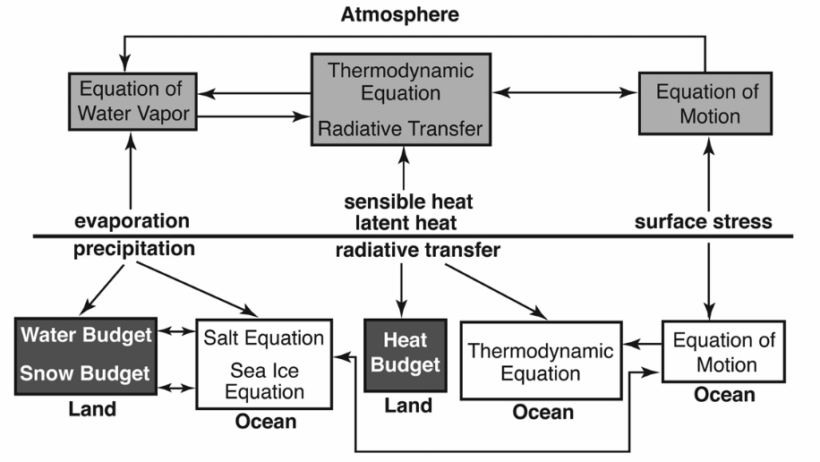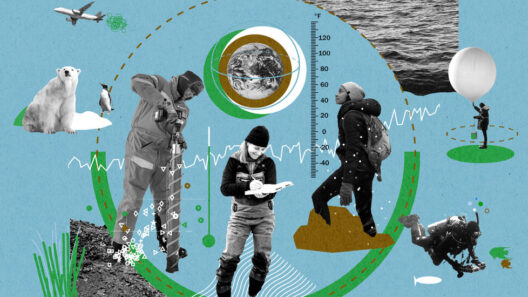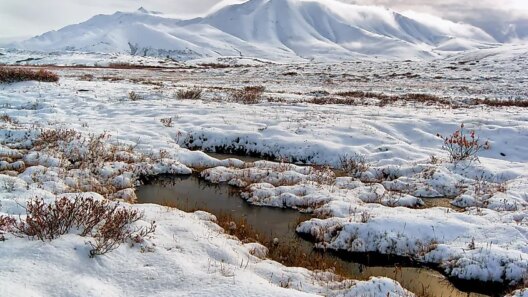Carbon, the fourth most abundant element in the universe, possesses an enigmatic paradox in its delicate balance within Earth’s ecosystems. While it is a fundamental building block of life, its overabundance in the atmosphere has precipitated an existential crisis—climate change. What is the role of carbon in climate change? To navigate this intricate landscape, one must unravel the complexities of carbon, particularly carbon dioxide (CO2), and its multifaceted impacts on our planet.
To understand carbon’s role, it is essential to first comprehend its natural cycle. Carbon exists in different forms and is constantly circulated through the atmosphere, lithosphere, hydrosphere, and biosphere in a process known as the carbon cycle. Plants absorb atmospheric CO2 during photosynthesis, utilizing it to create organic matter that serves as a foundation for various ecosystems. Animals, in turn, consume these plants and, through respiration, release CO2 back into the atmosphere. However, human activities, particularly since the Industrial Revolution, have disrupted this natural equilibrium.
The burning of fossil fuels—such as coal, oil, and natural gas—has dramatically increased the levels of CO2 in the atmosphere. According to scientific consensus, these emissions far surpass the natural process of carbon cycling. With atmospheric CO2 concentrations now reaching unprecedented levels, we find ourselves confronting the daunting consequences of anthropogenic climate change. But why does this matter? Imagine a planet where extreme weather events become the norm, sea levels rise, and essential ecosystems collapse. Are we prepared to face such a reality?
One of the most significant impacts of elevated CO2 levels is the greenhouse effect, a natural phenomenon that warms the Earth’s surface. Solar radiation penetrates the atmosphere, heats the ground, and is then radiated back into space as infrared energy. Greenhouse gases like CO2 trap some of this outgoing infrared radiation, maintaining a temperature conducive to life. However, as the concentration of these gases rises, so too does the amount of trapped heat—a process that leads to global warming.
In examining this relationship more closely, it becomes apparent that carbon dioxide is not the only player in this intricate game. Methane (CH4) and nitrous oxide (N2O), both even more potent greenhouse gases than CO2, are also largely products of human activities. Agricultural practices, particularly livestock rearing and rice cultivation, release immense quantities of methane. With nitrous oxide, synthetic fertilizers facilitate its emission from soils. Together, these emissions create a climate feedback loop whereby warming enhances the release of more greenhouse gases, thereby exacerbating the situation.
But the storyline does not end here. Elevated CO2 levels induce more than just rising temperatures. They contribute to ocean acidification, a consequence of the ocean absorbing a significant fraction of atmospheric CO2. The results are dire for marine ecosystems; coral reefs, vital to marine biodiversity, experience bleaching events and diminished calcification rates. Shellfish and other marine organisms struggle to maintain their calcium carbonate structures in increasingly acidic waters. Are we willing to sacrifice the rich biodiversity of our oceans for perpetual convenience?
The social implications of increasing carbon concentrations are profound. Climate change exacerbates inequalities, particularly in marginalized communities that often bear the brunt of environmental upheavals despite contributing minimally to emissions. Vulnerable populations, often located in flood-prone or arid regions, find their livelihoods disrupted by extreme weather, dwindling resources, and displacement. The reverberations of our carbon emissions are felt not just in the environment but echo through societal frameworks worldwide.
Addressing the challenge posed by carbon in climate change demands a multifaceted approach. Mitigation efforts focus primarily on reducing greenhouse gas emissions. Transitioning to renewable energy sources, such as solar, wind, and hydroelectric power, offers one crucial path forward. By moving away from fossil fuels, we can curtail CO2 emissions and foster a sustainable energy future.
However, it is equally vital to prioritize carbon sequestration—a process that captures and stores atmospheric CO2. Reforestation and afforestation efforts can enhance natural carbon sinks, absorbing CO2 through photosynthesis. Innovative technologies, such as direct air capture, provide promising opportunities for removing carbon from the atmosphere, though they require significant investment and research to become viable on a large scale.
Furthermore, adopting sustainable agricultural practices can minimize emissions from the sector while enhancing productivity and food security. Techniques like agroecology, organic farming, and permaculture prioritize soil health, sequestering carbon while reducing reliance on synthetic fertilizers and pesticides.
The urgency of the situation cannot be overstated. As global citizens, our responses to carbon emissions will fundamentally shape Earth’s future climate. Will we rise to the occasion, leveraging innovation and collaboration to mitigate the anthropogenic impacts of carbon? Or will we allow the legacy of our actions to dictate a grim reality for future generations? The time to act is now. Embracing solutions, fostering awareness, and advocating for change are not merely options—they are imperatives in the face of a climate crisis orchestrated by carbon.
In conclusion, the role of carbon, particularly in the form of CO2, is a pivotal factor in the narrative of climate change. From its integral position in natural systems to its anthropogenic transformation into a catalyst for global warming, the implications of carbon cannot be overlooked. The myriad challenges it presents compel us to consider our responsibilities and opportunities to forge a sustainable path forward. It is paramount that we recognize the interconnectedness of our choices with the broader environment, thereby inspiring collective action for a healthier planet.








